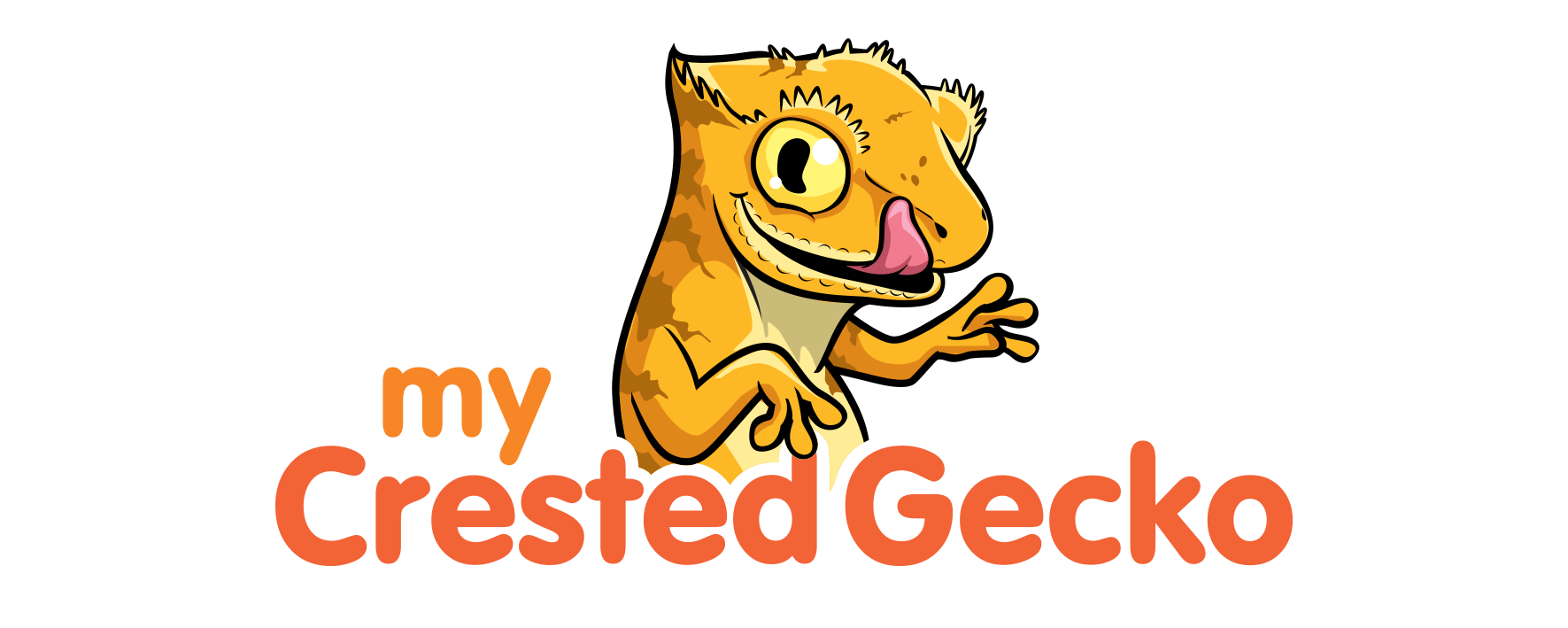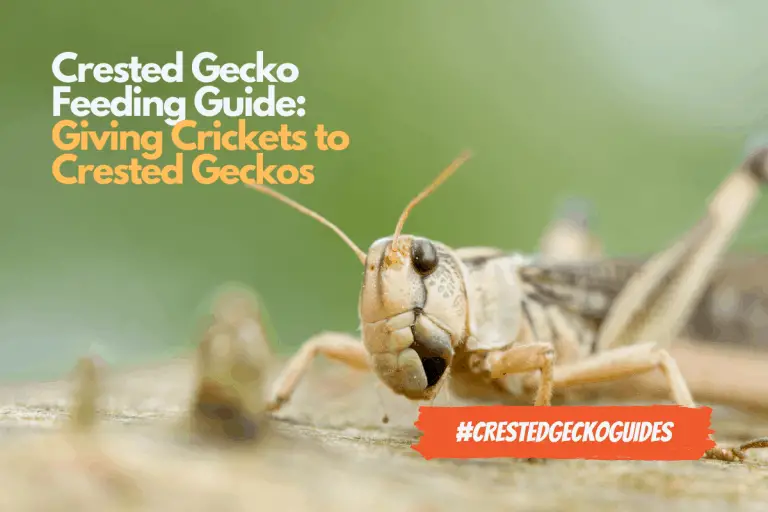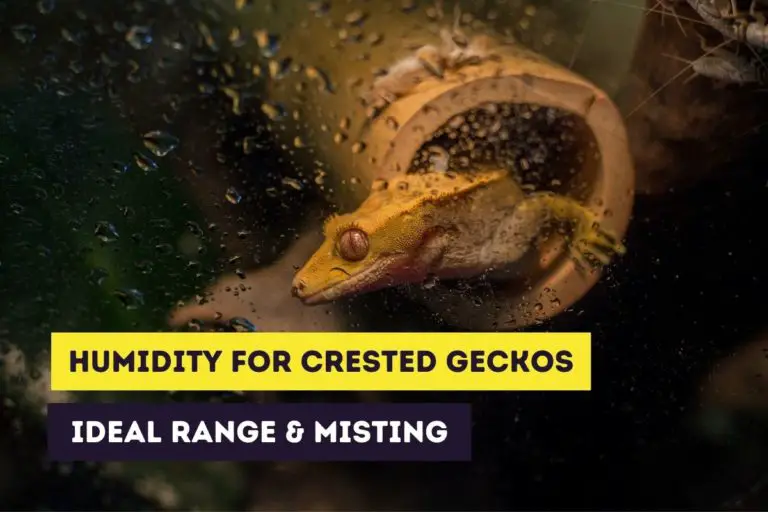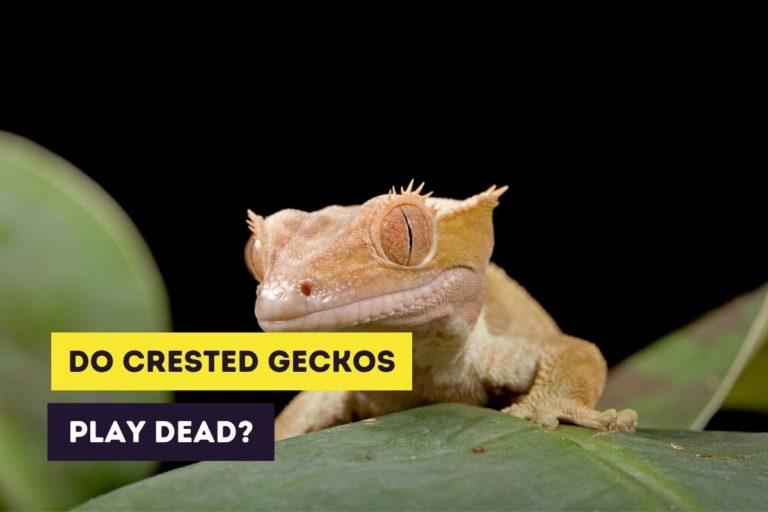The Crested Gecko Guide: How to Prepare Yourself for a Crested Gecko?
You’re reading Preparing for a Crested Gecko in Crested Geckos: The Complete Guide for Noobs. Quickly navigate to other chapters: Intro | Preparing for a Crested Gecko | Buying a Crested Gecko | Crested Gecko Care
Before you even buy a crested gecko you’ll need to be fully prepared. You should:
- prepare yourself for your new pets and the new responsibilities
- prepare your home to house a crested gecko
- know what you need to buy to care for a crested gecko and where to buy it
- find a vet that knows how to diagnose and treat a crested gecko
As you can see we’ve got a lot to learn and a lot of different topics to cover, so let’s get started!
This site contains affiliate links to products we recommend and use ourselves. We may receive a commission for purchases that you make through these links. If you’re interested in learning more about our affiliate links, please visit our (affiliate) disclaimer.
If you’re interested in stickers or other products of crested geckos, you can always visit our Etsy Shop, which is called Artful Animalia. We currently only send stickers in the United States. If you’re interested in certain crested gecko-related products, don’t hesitate to contact us.
Preparing Yourself
When you look at the adorable crested gecko in a pet store you might be persuaded to an impulse buy but impulse buys are never a good idea, especially when it comes to buying a pet. Pets require care for a certain period and will have an influence on you and your family.
It’s essential that you prepare yourself and your family before you get a pet. The following questions should always be asked before you get a crested gecko:
- can you keep a crested gecko in your home?
- why do you want a crested gecko?
- what do you expect from a/what can you expect from a crested gecko?
- is everybody in your family on board with getting a crested gecko?
- who’s going to care for the crested gecko?
Can you keep a crested gecko in your home?
Crested geckos are considered illegal in some countries and states. You might happen to live in such a region where it won’t be allowed to hold crested geckos as pets. Inform yourself about the regulation in your region!
Even if you can legally keep crested geckos in your region, you might not be allowed to keep them in your home. This can be the case when you’re renting an apartment and the lease doesn’t allow pets. You should always check your rental agreement to make sure that pets are allowed. If there’s no written clause that allows this, you shouldn’t get a pet even when your landlord verbally consents.
Why do you want a crested gecko?
People get pets for a myriad of reasons and the reasons why you get a dog are possibly different than why you would want to get a crested gecko or another kind of pet. The most common reasons why you possibly would want a crested gecko are:
- companionship: if you live alone your home can sometimes feel empty. This might lead to a feeling of loneliness. A lot of people get a pet to have someone to take care of and that gives a form a friendship in place.
- taking care of another being: people like the feeling of being needed by someone or something. A pet will need you to take care of it or else it will soon die. This care gives a satisfying feeling to a lot of people. It’s also a good way to give a sense of responsibility to children.
But other pets can also provide companionship and a good feeling. So why would you want to get a crested gecko?
A lot will depend on what kind of pet fits your lifestyle. If you want an active pet that you can go for a walk with, a crested gecko would not be a great choice. Crested geckos are active but nocturnal creatures. They’re relatively small and are easy to tame and handle. However, they’re not cuddly animals like dogs and you’ll need some bonding with them before they will be handled.
What do you expect from a/what can you expect from a crested gecko?
You should know what to expect from your crested geckos before getting them. You should be aware that crested geckos:
- can be kept alone or in a small group: crested geckos aren’t very picky when it comes to being alone or in a group. If you do want to keep multiple crested geckos you’ll need to take into account a few things like the male-female ratio and the way you introduce your crested geckos to each other. If you just want one crested gecko this is also fine and you can give all your love to it.
- need time to bond: crested geckos might seem cute and cuddly but they need some time to bond. Crested geckos are “new” pets that aren’t used to being handled and their instinct is to run away and hide when they get caught. Luckily, crested geckos are smart and curious animals that can be bonded with given the proper time. Their curious nature will aid in this bonding process.
- require a small terrarium: crested geckos only need a small vertical terrarium and there are manufacturers that have made terrariums just for them. As is the case with a lot of pets, the larger the terrarium the better. Still, a good-sized crested gecko terrarium can be placed in houses and even apartments.
Discussing getting a crested gecko with your family or housemates
If you live alone, feel free to skip this little section. But if you live with your family or friends you want to discuss getting a crested gecko with them. Make sure that you know the basics of crested gecko care and have informed yourself of the total cost of crested geckos. This way you can answer all the questions from your family or housemates. If they still got questions or are interested to learn more, don’t hesitate to refer them to this site.
An important thing to discuss is whether your family members/housemates have pet allergies. It’s also extremely important that they’re not afraid of reptiles. A lot of people have a fear of getting reptiles in their house, but crested geckos are usually not a reason to get scared. They’re lovely creatures that have a friendly and curious nature.
Dividing the responsibilities
If you’re the only one in your household, you will probably carry all the responsibilities related to your new pet. But if you live with other persons or children you’ll need to talk about the responsibilities and sharing them between all the members in the household.
To give you an idea of the new responsibilities:
- you’ll need to feed and give fresh water to your crested gecko
- the terrarium needs to be thoroughly cleaned at least once a month
- you’ll need to make sure that the temperature, humidity, and lighting stay within the ranges that your crested gecko needs
Preparing Your Home
Where to place the crested gecko cage?
Recommended locations
You should find a good location for your crested gecko cage by taking into account the following recommendations:
- place the cage on waist level or higher: crested geckos are prey animals and are preyed upon by birds. Their natural instinct is to run when they encounter a predator or lose their tail when grabbed by it. Your crested gecko should always be able to get to a level that’s the same height as yourself. This makes it also a lot easier to check up on your crested gecko.
- keep it away from ventilation, radiators, direct sunlight and cold spots: crested geckos are sensitive creatures that need the right kind of humidity and temperature to live a happy life.
Locations to avoid
There are some locations that are more suitable than others to place your crested gecko cage. Here are some “bad” cage locations, although a lot will depend on the particular situation in your home:
- bedroom: crested geckos are most active during twilight periods but when you place a cage in your bedroom it’s possible that they will make noises that wake you up at night.
- garage or shed: garages and sheds are usually colder than the rest of the house. You will also usually have little interaction with your crested gecko when you house them in a garage or shed. Lastly, exhaust fumes from cars are dangerous for your crested geckos.
The above locations are less suitable because you’ll not see your crested geckos as much as when you house them in your living room. Most people will house their crested geckos in their living room so they can enjoy them during the evening and in the morning.
Gecko-proofing your home
Why do you need to gecko-proof a room?
Although it’s possible to keep crested geckos most of the time in their terrarium – if it’s large enough and provides enough stimuli – you’ll have to get them out of the terrarium at some point.
Common situations where your crested gecko will be kept outside the terrarium:
- while cleaning the terrarium you’ll need to keep your crested gecko in a separate terrarium or container
- when you handle your crested gecko outside the terrarium
A lot of rooms in our homes contain dangerous objects for animals. Since crested geckos can be escape artists and can slip from your hands while handling, you’ll need to be sure that the room is gecko-proof for their safety. If you don’t gecko-proof the room, they can escape and can get stepped on.
Household hazards
A house can be a real death trap for small animals and if you’re not careful your crested gecko might find a place to crawl in and not be able to get out. Before you get crested geckos – and especially before you let them out of their cage – check that the room their cage is in, is gecko-proof. This means that:
- there are no traps lying around: make sure that there are no sticky or snap traps in the room. You might want to get rid of a rodent problem but crested geckos are equally in danger of getting caught in such traps.
- household chemicals are kept in a closed cabinet: if you’ve got children you should already store these chemicals in a closed cabinet where your children can’t get to them. The same is applicable to crested geckos that might want to take a nip of some bleach lying around.
- there are no small holes or crawl spaces: crested geckos are small – measuring only 10 inches – and can fit through relatively small holes and can get stuck in the process. You should make sure that there are no crawl spaces or cracks in the walls.
Other pets
Crested geckos are small prey animals and they should be kept away from other pets. Animals, while they can be friendly towards you and your family, still have their hunting instincts. Dogs, cats and even birds can pose a serious threat to your crested geckos. When your crested gecko is out of its cage it’s the safest to not let any other pet in the same room. Even when they’re in their terrarium you should always be careful that the terrarium is safely secured and that your other pets can’t hurt them.
Buying the Necessary Gear
What do you need for a crested gecko?
When you’re getting a pet, you’ll need to buy a few products that are necessary to take care of your crested gecko. You’ll need to buy some basic gear for the crested gecko:
- terrarium
- substrate
- terrarium plants
- lighting
- heating equipment and thermometers
- hygrometers and misting bottles
- water and food dishes
You’ll also have some recurring costs, some of which are mentioned above. The most important recurring cost, however, is food.
Terrarium
Crested geckos are arboreal. In the wild, they live in trees and large bushes. They absolutely love to jump and climb. This means that you’ll need a vertical terrarium that is high enough for your crestie to climb and jump.
A glass tank is often much better than an acrylic terrarium, which is easily scratched and damaged. Never use a wooden enclosure as these quickly rot with the high humidity level your gecko needs.
What is the minimum tank size for a crested gecko?
A 12 x 12 x 18-inch enclosure is the bare minimum for a single adult. The tank should be at least 10-20 gallons in volume. Of course, when it comes to housing adult crested geckos, taller and larger is better. This allows your gecko to climb, exercise, and explore the awesome environment you’ve created with plants and branches. It also allows for a temperature gradient of hot and cool areas.
If your chosen tank has no lid, you will need to buy a screen cover to prevent your gecko escaping, provide ventilation, and keep your gecko away from hot light bulbs.
Want to know more about terrariums?
Read our guide on choosing a terrarium for your crested gecko.
Substrate
A substrate is the flooring of the terrarium and is not essential. There are reptile owners that don’t use substrate but for a more naturalistic look, it’s better to have substrate.
If you have a hatchling or juvenile crested gecko you should use paper towels or newspapers as substrate. Why? Because they have a tendency to ingest the substrate and may wind up with impacted guts. If you use paper towels or newspapers you reduce this risk.
When your crested gecko grows up and becomes an adult you can use a commercial or DIY soil mix.
Want to know more about the substrate?
Read our guide on choosing a substrate for a crested gecko terrarium.
Terrarium Plants
Terrarium plants are essential for your crested gecko. You’ll have to choose between live and fake terrarium plants. I would recommend using live terrarium plants but the choice is of course up to you.
If you choose to have live plants in the terrarium it’s extremely important that the plants are safe for your crestie. Below is a list of plant species that are known to be safe:
- Pothos
- Sanseveria
- Hoya
- Bromeliads
- Ferns
- Bamboo
- Philodendron
- Ficus Alli
When choosing your plants, ensure they are strong enough to support your gecko’s weight. And if you use potted plants, make sure they can’t topple over and crush your crestie! Also, remember to leave half the tank clear so your gecko can navigate and move around freely.
Want to know more about plants?
Read our guide on choosing the plants for a crested gecko terrarium.
Lighting
You don’t really need lighting for your terrarium. But if you want to use lighting to help increase the tank temperature, choose a compact fluorescent bulb such as those from a trusted brand, Exo Terra, or the Zoo Med ReptiSun bulb. Amazon.com also has a good choice of fluorescent bulbs from a variety of known brands.
There are special UVB bulbs available, though many experienced owners swear they aren’t necessary. The benefits of UVB bulbs are that they help your gecko to convert vitamin D and they also promote natural behavior. If you choose to use UVB bulbs, ensure there is plenty of leaf coverage to protect your gecko’s sensitive widdle eyes from UVB over-exposure. Only use this type of bulb for 4-6 hours per day.
You can get bulbs specifically for all-night use; these come in red (infrared) and blue spectrum (moonlight). These should only be used for brief periods in the evening or early morning to heat the terrarium. This is because these lights can disturb your gecko’s normal nocturnal behavior. Try instead a red-colored glass bulb as the light will be less harsh and disruptive – you’ll still get to view your geckos in a cool, creepy light.
Want to know more about lighting?
Read our guide on choosing lighting for a crested gecko terrarium.
Heating equipment and thermometers
Heating equipment
The ideal temperature for crested geckos ranges from 72 to 78 degrees Fahrenheit (21 and 25 degrees Celsius) during the day. During the night they can handle lower temperatures. At night the temperature should range between 69 and 74 degrees Fahrenheit (20 and 22 degrees Celsius).
So, crested geckos don’t really need high temperatures. If you look at these temperatures you will see that these are roughly the same temperatures that humans like. Most room temperatures will be fine for a crested gecko. So if you live in a mild climate and the room temperature is between these temperatures you should be fine.
If you need to increase the temperature in your crested gecko terrarium, you can choose between a lot of different options. If you want to create a thermal gradient in the terrarium you should get either a heat emitter or radiant heat panel.
Thermometers
You will need to know the ambient and surface temperature of the terrarium. Ambient temperature is the air temperature while the surface temperature is the temperature of objects in the terrarium.
A good crested gecko owner monitors both because they can be very different. To measure the ambient temperature you should use a probe thermometer. This kind of thermometer can take temperature readings at different parts of the terrarium. To measure the surface temperature you can use a temperature ‘gun’ thermometer. This kind of thermometer is great for reading the surface temperature of the plans and the substrate.
Want to know more about heating equipment?
Read our guide on choosing the heating equipment for a crested gecko terrarium.
Hygrometers & Misting Bottles
A crested gecko terrarium needs to have humidity between 50 and 70 percent. This humidity helps keep the crested gecko stay healthy and makes it easier for him to shed his skin.
To monitor the humidity you should use a hygrometer. This is a device that measures the humidity in the air. They come in both analog and digital varieties. The digitals are generally considered better as they are more accurate.
If you notice that the humidity is not on point, you should “mist” the terrarium with a so-called misting bottle.
Food and water dishes
You’ll need to feed your crested gecko every few days or three times a week. Besides that your crested geckos will need to have access to fresh water every day. This means that you’ll need to have food and water dishes. There is a wide variety of dishes available and you can even get dishes that adhere to the sides of the terrarium.
I would recommend that you get food and water dishes that are sturdy and can get tipped over by your crested gecko. It’s also important that the dishes aren’t too deep since it’s possible that your crestie – especially when it’s young – falls in and drowns.
Food
Lastly, you should prepare for your crested gecko by buying enough food to last for at least a month. Crested geckos don’t need to eat a lot and there are some commercial diets available to get started right away. The most popular brands of crested gecko food are:
- Repashy Superfood: this is a diet that comes in a powder form and has to be mixed into a paste with water
- Fluker’s Crested Gecko Diet: this brand offers little ball-shaped granules that you can put straight into the food dish
- Pangea: this brand has several powdered mixes that provide a blend of insects and fruits
A lot of people feed their crested geckos just these commercial diets and their crested geckos are healthy but you can also give insects and worms to your crested gecko to mimic its diet in nature. Crickets, dubia roaches, and waxworms are popular choices to give to your crested geckos. You’ll need to gut-load and dust them to provide enough nutrition and supplements to your crestie. You can also give fruit as a treat about twice a month.
Where to buy the necessary gear?
Everything you need can be bought in pet stores. If your local pet store doesn’t have any reptile supplies you don’t need to worry, you can also buy the necessary gear online on sites like Amazon or online stores that specialize in reptiles.
To give you a head start, here are some sites that sell the gear you’ll need:
Although these sites and others can give you competitive prices you might also find really good deals at pet stores. It all depends on the region you’re in.
Finding a Vet
Crested geckos are exotic animals and not all vets have a lot of experience with this kind of pet. You should find a vet that lives close by and that’s capable of doing the annual checkups and treatments of your crested gecko. Also, check what’s the closest emergency animal hospital and write down the number.
Now that you know what a crested gecko needs, you can continue to the next chapter in the guide: Buying a Crested Gecko.







